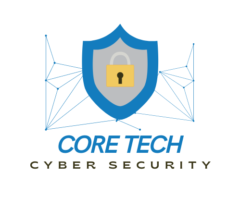Monitoring live cyber threats in real-time is crucial for maintaining robust security and responding swiftly to potential attacks. Real-time threat monitoring helps organizations identify and mitigate threats before they can cause significant damage. Here’s how you can effectively monitor live cyber threats:
1. Implement a Security Information and Event Management (SIEM) System
SIEM systems are powerful tools that aggregate, analyze, and monitor security data from various sources in real time. They provide a centralized view of security events and help in detecting and responding to threats.
Key Features:
- Log aggregation from different systems and devices.
- Real-time correlation and analysis of security events.
- Automated alerts and incident response capabilities.
Popular SIEM Tools:
- Splunk: Offers real-time data analysis and visualization.
- IBM QRadar: Provides comprehensive security analytics and threat intelligence.
- Elastic Security: Integrates with the Elastic Stack for real-time threat detection.
2. Utilize Intrusion Detection and Prevention Systems (IDPS)
IDPS solutions monitor network traffic and system activities to detect and prevent malicious activities. They analyze patterns and behaviors to identify potential threats in real-time.
Key Features:
- Signature-based detection for known threats.
- Anomaly detection for identifying unusual behaviors.
- Real-time alerts and automated responses to detected threats.
Popular IDPS Tools:
- Snort: An open-source network intrusion detection system.
- Suricata: A high-performance network threat detection engine.
- OSSEC: A host-based intrusion detection system with real-time monitoring.
3. Deploy Endpoint Detection and Response (EDR) Solutions
EDR solutions focus on monitoring and protecting individual endpoints (such as computers and mobile devices) from threats. They provide real-time visibility into endpoint activities and can quickly detect and respond to malicious actions.
Key Features:
- Continuous monitoring of endpoint activities.
- Behavioral analysis to identify potential threats.
- Real-time alerts and automated response capabilities.
Popular EDR Tools:
- CrowdStrike Falcon: Offers real-time threat detection and response for endpoints.
- Carbon Black: Provides comprehensive endpoint protection and monitoring.
- Sophos Intercept X: Includes real-time threat detection and advanced analytics.
4. Leverage Threat Intelligence Feeds
Threat intelligence feeds provide up-to-date information about emerging threats, vulnerabilities, and attack techniques. By integrating these feeds into your monitoring systems, you can stay informed about the latest threats and adjust your defenses accordingly.
Key Features:
- Real-time updates on new threats and vulnerabilities.
- Integration with SIEM and other security tools for contextual threat information.
- Insights into attack trends and indicators of compromise (IOCs).
Popular Threat Intelligence Feeds:
- AlienVault OTX: Offers community-driven threat intelligence.
- ThreatConnect: Provides actionable threat intelligence and integration capabilities.
- VirusTotal: Aggregates threat intelligence from various sources.
5. Employ Network Traffic Analysis (NTA) Tools
NTA tools monitor network traffic for suspicious activities and anomalies. They analyze data flows and patterns to detect potential threats in real-time.
Key Features:
- Deep packet inspection to analyze network traffic.
- Anomaly detection to identify unusual network behavior.
- Real-time alerts and forensic analysis capabilities.
Popular NTA Tools:
- Zeek (formerly Bro): An open-source network monitoring framework.
- Darktrace: Uses machine learning to detect and respond to network anomalies.
- NetFlow Analyzer: Monitors and analyzes network traffic patterns.
6. Implement Security Operations Center (SOC) Services
A Security Operations Center (SOC) provides centralized monitoring and management of security operations. SOC teams use various tools and processes to detect, analyze, and respond to cyber threats in real time.
Key Features:
- 24/7 monitoring of security events and incidents.
- Incident response and management capabilities.
- Integration of multiple security tools and technologies.
SOC Providers:
- Sumo Logic: Offers SOC-as-a-Service with real-time analytics.
- AT&T Cybersecurity: Provides comprehensive SOC services and threat intelligence.
- Alert Logic: Delivers managed detection and response services.
7. Conduct Regular Security Awareness Training
Security awareness training helps ensure that your team is aware of the latest cyber threats and how to recognize them. While not a direct monitoring tool, it enhances your organization’s ability to respond to real-time threats effectively.
Key Features:
- Training modules on identifying phishing and social engineering attacks.
- Simulated attack exercises to test employee responses.
- Ongoing updates on new threats and best practices.
Training Providers:
- KnowBe4: Offers comprehensive security awareness training programs.
- Cofense: Specializes in phishing awareness and response training.
- SANS Security Awareness: Provides a range of training and simulation options.
Conclusion
Monitoring live cyber threats in real time involves leveraging a combination of advanced tools and strategies. SIEM systems, IDPS, EDR solutions, threat intelligence feeds, NTA tools, SOC services, and security awareness training all play crucial roles in providing comprehensive threat detection and response capabilities. By integrating these solutions and maintaining a proactive approach, you can effectively safeguard your systems against emerging threats and minimize the impact of potential attacks.
